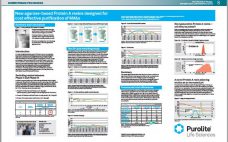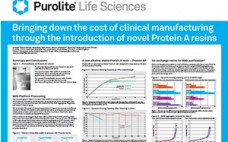It is well recognized that the cost of Protein A resins is substantial. If a product makes it to marketing approval and manufacturing the high cost is amortized over a large number of purification cycles then the contribution to cost of goods is acceptable. However, a high percentage of clinical projects will fail and the Protein A resin will only be used for a small number of cycles. One way to address this issue is to use a less expensive…
Author Archives: Caroline Tinsley
Decreasing Cost of Clinical Trials Through the Use of Two Novel Protein A Resins
Tackling the High Cost of Protein A in Early Clinical Phases The cost of Protein A resins is very high, commonly 5-10 times higher compared to standard chromatography resins. One way to address this issue is to use a less expensive Protein A resin during early clinical trials, where the risk of failure is higher and fewer cycles are run, and subsequently switch to a resin designed for manufacturing if the product makes it to PIII and beyond. The higher…
A Fresh Approach to Process and Cost Efficiencies in Early Clinical and Biosimilars Production
This poster will introduce Praestoâ„¢ AC protein A resin and ProcessReady pre-packed columns from Purolite. Platform processes for MAbs manufacturing have long been used to save time and costs. The use of highly productive, cost- effective resins in such platforms can magnify these savings, and the addition of ready-to use formats can further enhance process efficiencies. Our approach is to maximize these efficiencies and cost savings in early clinical-phase production and in the manufacture of biosimilars by using stage-appropriate materials…
Modern Resins for a MAb Platform Process
Purolite is using new technologies to produce homogeneous beaded agarose for protein purification at large scale. Particle sizes range from 40 to 90 μm. The resins cover applications from capture to polishing and demonstrate improved pressure–flow properties (Figure 1). The porosity structure is optimized for medium-sized proteins such as monoclonal antibodies (MAbs). Read the full text of this application note in the PDF (Login required).



